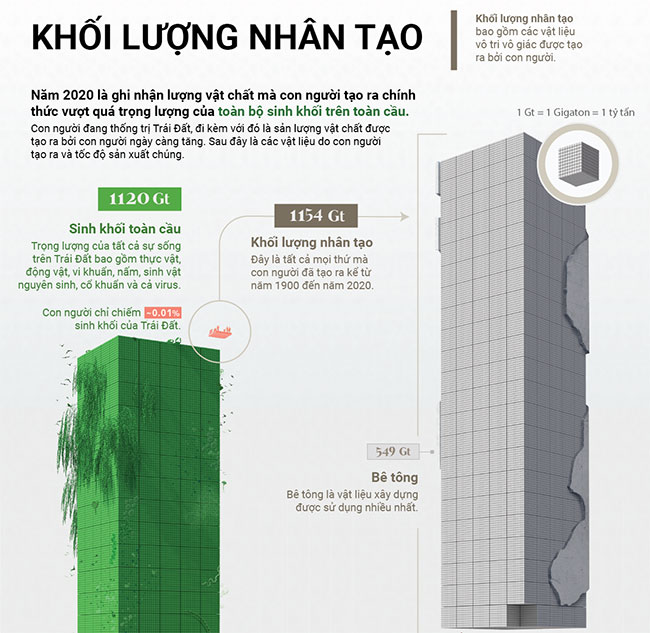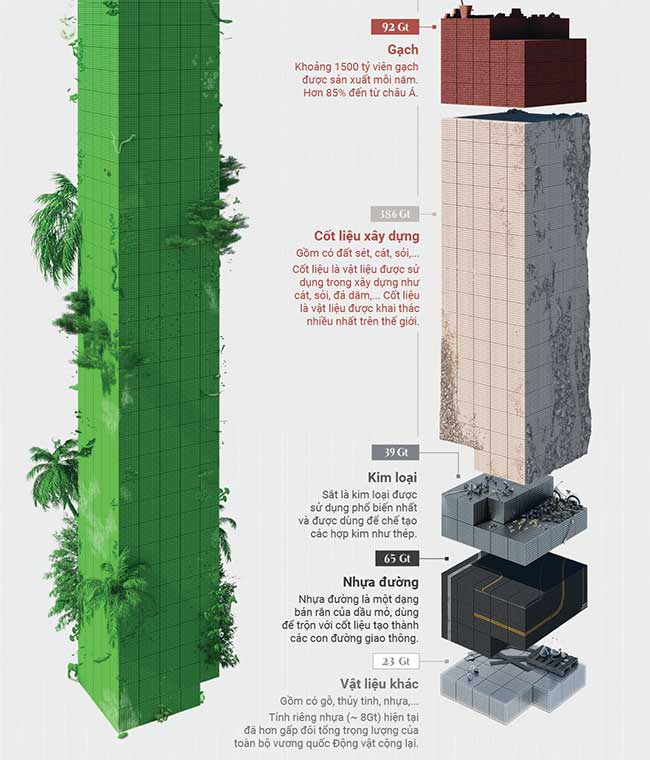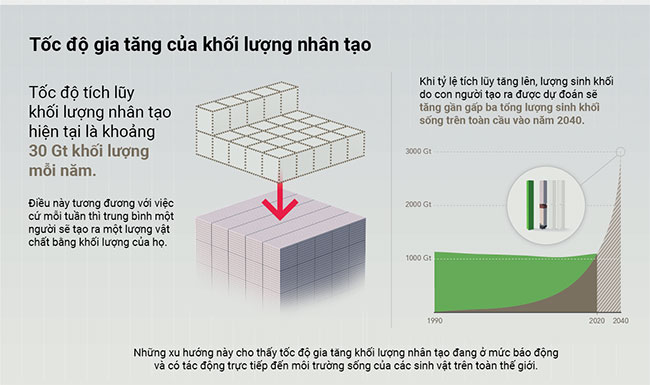The world hasn’t become larger, but the human population continues to grow, consuming more resources and altering the very environment we live in.
Artificial mass is defined as the mass of inanimate material created by humans through the use of natural resources and fossil fuels.
In 2020, for the first time, the mass created by humans, also known as artificial mass, exceeded the dry weight (excluding water and liquids) of all life on Earth, including humans, animals, plants, fungi, and microorganisms.
The Rate of Increase of Artificial Mass
Over the past century, the mass created by humans has rapidly increased, doubling approximately every 20 years.
To build roads, houses, buildings, printed paper, coffee cups, computers, and all other human-made items, billions of tons of fossil fuels, metals and minerals, wood, and agricultural products are required.
Each year, we extract nearly 90 billion tons of raw materials from the Earth to produce artificial materials. The accumulation rate of human-created mass has now reached 30 gigatons (Gt) – equivalent to 30 billion tons – annually, based on the average over the past five years. This corresponds to each person on Earth producing more than their own weight each week.
The Impact of Artificial Mass on Other Organisms
While the mass of humans accounts for only about 0.01% of the total biomass on Earth, our impact is profoundly significant. We are one of the few species capable of altering the environment and directly affecting all life on Earth.
At the current rate, reserves of certain materials such as fossil fuels and minerals may be depleted in less than 100 years. As a result, surveyors are expanding their search for fresh raw material sources, exploring places like the Arctic, deep seas, and even asteroids.
As the global population continues to rise, the pressure on the natural environment also increases. Calculating the impact of humans on the environment is crucial if we want to protect life on Earth.





















































